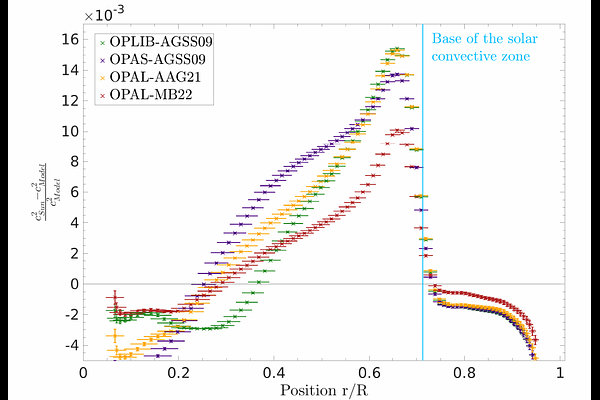The Future of Solar modelling: requirements for a new generation of solar models

The Future of Solar modelling: requirements for a new generation of solar models
Gael Buldgen, Gloria. Canocchi, Arthur. Le Saux, Vladimir A. Baturin, Regner Trampedach, Anna V. Oreshina, Sergey V. Ayukov, Anil Pradhan, Jean-Christophe Pain, Masanobu Kunitomo, Thierry Appourchaux, Rafael A. Garcia, Morgan Deal, Nicolas Grevesse, Arlette Noels, Joergen Christensen-Dalsgaard, Tristan Guillot, Devesh Nandal, Jérôme Bétrisey, Christophe Blancard, James Colgan, Philippe Cossé Christopher, J. Fontes, Ludovic Petitdemange, Charly Pincon
AbstractHelioseismology and solar modelling have enjoyed a golden era thanks to decades-long surveys from ground-based networks such as for example GONG, BiSON, IRIS and the SOHO and SDO space missions which have provided high-quality helioseismic observations that supplemented photometric, gravitational, size and shape, limb-darkening and spectroscopic constraints as well as measurements of neutrino fluxes. However, the success of solar models is also deeply rooted in progress in fundamental physics (equation of state of the solar plasma, high-quality atomic physics computations and opacities, description of convection and the role of macroscopic transport processes of angular momentum and chemicals, such as for example meridional circulation, internal gravity waves, shear-induced turbulence or even convection. In this paper, we briefly outline some key areas of research that deserve particular attention in solar modelling. We discuss the current uncertainties that need to be addressed, how these limit our predictions from solar models and their impact on stellar evolution in general. We outline potential strategies to mitigate them and how multidisciplinary approaches will be needed in the future to tackle them.